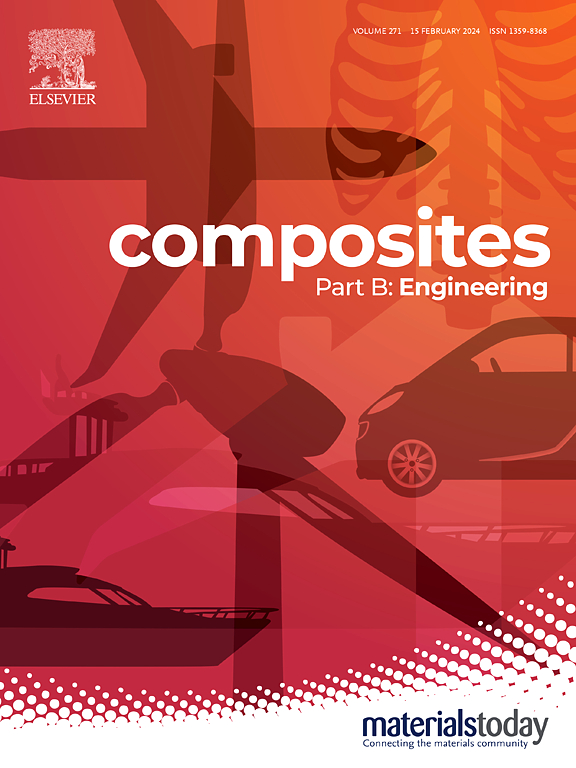Continuous magnetic-gradient hydrogel with augmented mechanical span and reverse-directional polysaccharides distribution for integrated repair of osteochondral defects
IF 12.7
1区 材料科学
Q1 ENGINEERING, MULTIDISCIPLINARY
引用次数: 0
Abstract
Natural osteochondral structure exhibits a continuous mechanical gradient that reflects the distinct mechanical properties of cartilage and bone. However, few continuous gradient casting methods can fabricate gradient scaffolds that match the mechanical span of natural osteochondral tissue for repairing full-thickness osteochondral defects. This study presents a continuous magnetic-gradient hydrogel with augmented mechanical span, developed through magnetic field-induced casting and post-modification techniques, for integrated repair of osteochondral defects. Through post-modification crosslinking, the hydrogel's mechanical span reaches two orders of magnitude, which is closer to the physiological gradient of cartilage to cancellous bone. Additionally, based on the natural polysaccharide characteristics of cartilage, two traditional Chinese medicine polysaccharides (oxidized Cuscuta chinensis polysaccharide and astragalus polysaccharide) are incorporated to create reverse-gradient that promote cartilage and bone tissue repair. Coupled with the hydrogel's magnetic gradient, an external gradient magnetic field is applied to further enhance the repair effects. Experimental results, both in vitro and in vivo, demonstrate that mechanical span augmented continuous magnetic-gradient hydrogel significantly facilitates the integrated repair of osteochondral defects. This work proposes a novel strategy to augment the mechanical span characteristic of continuous gradient hydrogel, resulting in a biomimetic scaffold that closely mimics the mechanical span properties of natural osteochondral tissue.

求助全文
约1分钟内获得全文
求助全文
来源期刊

Composites Part B: Engineering
工程技术-材料科学:复合
CiteScore
24.40
自引率
11.50%
发文量
784
审稿时长
21 days
期刊介绍:
Composites Part B: Engineering is a journal that publishes impactful research of high quality on composite materials. This research is supported by fundamental mechanics and materials science and engineering approaches. The targeted research can cover a wide range of length scales, ranging from nano to micro and meso, and even to the full product and structure level. The journal specifically focuses on engineering applications that involve high performance composites. These applications can range from low volume and high cost to high volume and low cost composite development.
The main goal of the journal is to provide a platform for the prompt publication of original and high quality research. The emphasis is on design, development, modeling, validation, and manufacturing of engineering details and concepts. The journal welcomes both basic research papers and proposals for review articles. Authors are encouraged to address challenges across various application areas. These areas include, but are not limited to, aerospace, automotive, and other surface transportation. The journal also covers energy-related applications, with a focus on renewable energy. Other application areas include infrastructure, off-shore and maritime projects, health care technology, and recreational products.
 求助内容:
求助内容: 应助结果提醒方式:
应助结果提醒方式:


